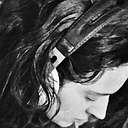A Kafkaesque season
Imagine you wake up with your vision twisted.
Just like in a Kafkaesque dream, one day, you wake up, and you cannot move your eyes to what lives in your periphery. Everything is in prime focus only, with no subtle presence of an indefinite scenery with all the movement and color of things residing at the back of your conscious awareness. Your visual world is full-frontal, and, suddenly, your brain has to substitute and fill in all those missing details.
Neuroscience tells us that our brains cannot cope with absences, and so it creates meanings and forms when there’s mere absence. It fills the gaps. It confabulates a story. It makes meaning from sparse patterns. The brain, this great narrator behind those many stories in Oliver Sacks, having filled pages after pages in the history of psychiatric neurology.
This wonder of the brain, shaping the background to what feeds its meaning, has now created its own nightmare. Because you don’t need to have a perceptual or neurological disorder for the brain to make up its mind about what is not there.
What’s not there, for almost a year now, is the reality of other people.
There should have been little surprise about the increasing rate of depression, fatigue, neurosis, and whatnot in large numbers of the general population. Scientific research repeatedly shows us how humans are social creatures, how the brain fundamentally runs on social interaction, and how the decrease of sensory input can drive people mad. In fact, the absence of social interaction even resembles the effects of starvation. Such that NASA also runs psychological tests to prepare astronauts for isolation. And yet, we do not seem to embed those scientific insights about the social mind into our general understanding of ourselves as real individuals. We tell people simply to stay at home. To isolate. To wait. (Indefinitely.) We create a Kafkaesque reality and wonder why at least some people seem to fall out of place more visibly after a while.
The view of ourselves as individuals still builds on an old Cartesian picture of “the mind’s I” as the foundation of “the mind.” Perhaps it is not some opaque inner essence of the self as an isolated “I,” but the social scaffolding creating the dynamics and stability for an “I” to be formed and endure.
Why else would social technology — from Twitter to Zoom — place itself so firmly in all branches of daily life now, from the professional to the personal. However, these should not be seen as social technologies. Such “social technologies” do not provide a stripped-down version of human interaction.
“But it’s the closest we have to social interaction.” Well, I don’t believe it is. On the contrary.
A year of zoom teaching feels like having woken up with my vision twisted. I cannot see the periphery. I see a wall of students staring into the screen, full frontal, with the noticeable flicker of visiting other pages during class lecture and discussion (facebook, Twitter, texting friends, coding for another class, whatever). It’s, frankly, demoralizing at times. I see people reacting, but I am never sure to what. My vision is twisted to a screen with several windows showing several faces. But I don’t see the context to their actions. I don’t see the periphery.I don’t see what they are responding to. I don’t see the embodied direct relation that, in essence, is social interaction. And so my brain is confronted with absence. It is starving, it creates stories. It fills in the gaps,… while it also knows that it does. It thinks itself into a dizzy frenzy about the reality of what it sees, and what it thinks it sees, and what it all now means anyway. And at the end of the day, I feel played empty.
Social interaction, the scaffolding for a mind’s I, is more than words, like instructions for interaction, directed at each other. It involves picking up others’ signals at the periphery — and often responding more to those signals than to the uttered, spoken word. Real social interaction fundamentally involves a tangible feeling of being responded to, a sense of feedback that does not rely on the brain’s faked feedback cycle in the absence of peripheral embodied social signals.
“As Gregor Samsa awoke one morning from uneasy dreams he found himself transformed in his bed into a gigantic insect.” A deprived existence in which we continue with our routines and a disregard for reality. And in which we have created a functionalized version of communication that ever so silently negates in us a recognition of what we really are.
